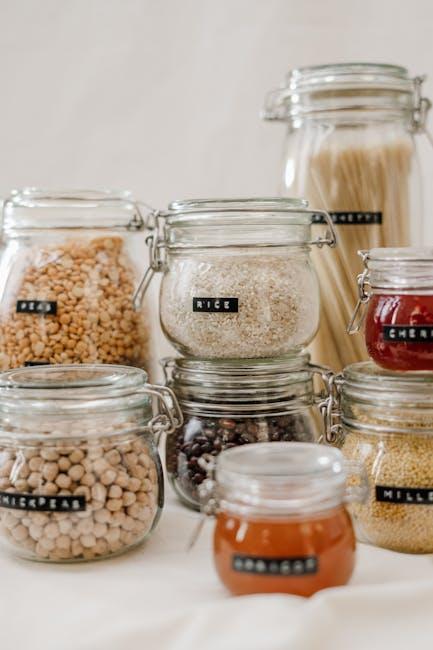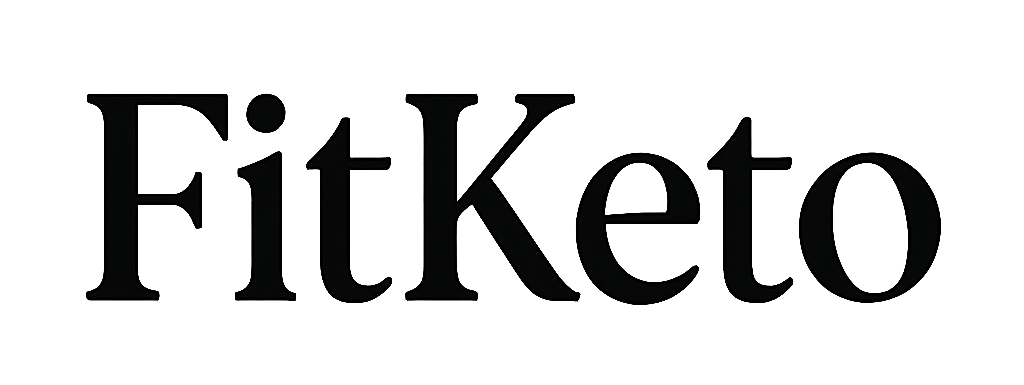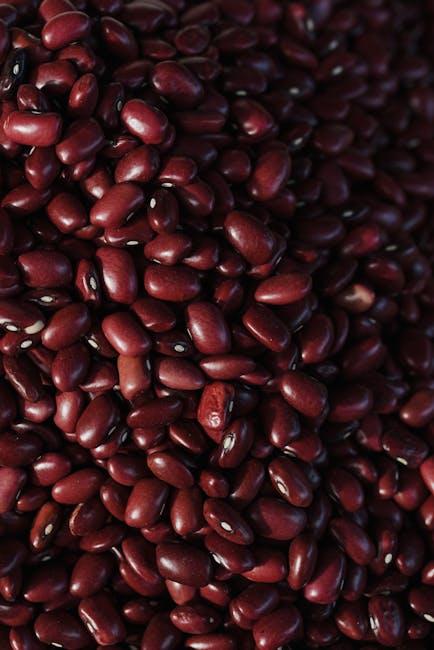Embarking on the GAPS journey can feel like stepping into a new culinary world—one where every ingredient plays a vital role in nurturing the gut and restoring health. For beginners, the pantry transforms from a simple storage space into a carefully curated treasure trove of healing foods. But where to start? Understanding which staples belong on your shelf is the first step toward creating meals that support digestion, reduce inflammation, and rebuild the inner ecosystem. In this article, we will explore the essential pantry staples for GAPS beginners, guiding you through the foundational ingredients that turn your kitchen into a sanctuary of wellness.
Table of Contents
- Understanding the Foundations of a GAPS Pantry
- Key Nutrient-Rich Foods to Stock for Gut Healing
- Smart Shopping Tips for Sourcing Quality Ingredients
- Must-Have Spices and Herbs to Enhance Flavor and Health
- Practical Storage Solutions to Keep Your Pantry Fresh
- Q&A
- In Conclusion

Understanding the Foundations of a GAPS Pantry
Building a well-stocked GAPS pantry starts with understanding the core principles behind this healing protocol. At its essence, the GAPS diet emphasizes nutrient-dense, healing foods that support gut restoration and immune balance. Prioritize whole, unprocessed ingredients that nourish the body deeply, focusing on foods rich in natural fats, bone broths, fermented products, and fresh vegetables. These staples form the backbone of any GAPS journey, making it easier to follow the protocol without feeling overwhelmed.
Focusing on quality over quantity will serve you best. Incorporate these essential staples into your pantry to ensure readiness and variety:
- Grass-fed meats and organ cuts
- Homemade chicken or beef bone broth
- Fermented vegetables like sauerkraut and pickles
- Raw, organic coconut oil and clarified butter (ghee)
- Wild-caught fish and seafood
- Fresh herbs and spices for flavor and healing properties
- Natural sweeteners in moderation, such as raw honey
| Staple | Healing Benefit | Storage Tip |
|---|---|---|
| Bone Broth | Supports gut lining repair | Freeze in portions |
| Fermented Foods | Boosts beneficial gut bacteria | Keep refrigerated |
| Grass-fed Meat | Rich in healthy fats | Freeze to prolong freshness |
Key Nutrient-Rich Foods to Stock for Gut Healing
When cultivating a gut-healing pantry, prioritizing nutrient-dense foods is essential. These ingredients not only help restore digestive balance but also provide vital vitamins and minerals to support overall health. Stock up on bone broth, rich in collagen and gelatin, which soothes the intestinal lining and promotes tissue repair. Fermented foods such as sauerkraut, kefir, and homemade yogurt introduce beneficial probiotics, crucial for rebuilding a balanced microbiome. Don’t forget to include high-quality fats like ghee, coconut oil, and olive oil, which supply essential fatty acids that aid in reducing inflammation and nurturing gut cell membranes.
In addition, a variety of fresh and dried herbs bring potent nutrients and healing compounds. Garlic, ginger, and turmeric, for example, possess powerful antimicrobial and anti-inflammatory properties, making them invaluable in gut restoration. Stash resistant starches such as cooked-and-cooled potatoes or green bananas for feeding good bacteria in the colon. Below is a quick-reference table to help you organize your pantry staples effectively:
| Food Category | Gut Benefits | Examples |
|---|---|---|
| Bone Broth | Supports tissue repair & soothes | Beef, chicken, fish bones |
| Fermented Foods | Replenishes probiotics | Sauerkraut, kefir, yogurt |
| Healthy Fats | Reduces inflammation | Ghee, coconut oil, olive oil |
| Herbs & Spices | Antimicrobial & anti-inflammatory | Garlic, ginger, turmeric |
| Resistant Starches | Feeds beneficial bacteria | Green bananas, cooled potatoes |
Smart Shopping Tips for Sourcing Quality Ingredients
When embarking on your GAPS journey, prioritizing quality over quantity can significantly enhance your results. Focus on sourcing ingredients that are as close to their natural state as possible—think organic, grass-fed, and free-range products. This not only ensures higher nutrient density but also minimizes exposure to pesticides and additives that can disrupt gut healing. Frequent local farmers’ markets and specialty health food stores often offer fresher, more reliable options compared to large chain supermarkets.
Smart shopping also involves being strategic about your budget and storage. Utilize seasonal produce and buy in bulk when possible to reduce costs without sacrificing quality. Keep an organized inventory by grouping staples and perishable items separately, making meal prep streamlined and preventing waste. Here’s a quick reference table to help you identify key qualities when shopping for top-tier GAPS ingredients:
| Ingredient | Ideal Quality | Shopping Tip |
|---|---|---|
| Bone Broth | Grass-fed bones, slow simmered | Buy bones from local farms and freeze in portions |
| Vegetables | Organic, seasonal | Visit farmers’ markets early for best selection |
| Fermented Foods | Raw and naturally cultured | Check labels for live cultures and minimal additives |
Must-Have Spices and Herbs to Enhance Flavor and Health
Incorporating a variety of fresh and dried spices and herbs can transform basic meals into rich, flavorful dishes while supporting your health journey on the GAPS diet. Spices like turmeric, known for its anti-inflammatory properties, and ginger, famous for soothing digestion, are pantry essentials. Fresh herbs such as rosemary, thyme, and parsley not only add vibrant bursts of flavor but also provide antioxidants and nutrients that aid in gut healing and overall wellness. These natural flavor enhancers allow you to minimize added salt and sugar while elevating the taste profile of soups, broths, and stews.
Below is a quick reference guide to some staple spices and herbs, highlighting their primary benefits for your GAPS lifestyle:
| Spice/Herb | Flavor Profile | Key Health Benefit |
|---|---|---|
| Turmeric | Warm, earthy | Anti-inflammatory |
| Ginger | Spicy, zesty | Digestive aid |
| Rosemary | Piney, woody | Antioxidant-rich |
| Thyme | Herbaceous, minty | Immune support |
| Parsley | Fresh, slightly peppery | Rich in vitamins A & C |
Practical Storage Solutions to Keep Your Pantry Fresh
To maintain the vitality of your pantry staples, consider investing in airtight glass jars or BPA-free containers. These not only protect your ingredients from moisture and pests but also allow you to visually track your inventory without unnecessary opening. Label each container clearly with the item name and expiration date, utilizing waterproof labels or chalkboard stickers for a sleek, organized appearance.
Incorporate a strategic layout by grouping items based on usage frequency and type. For example, store daily essentials like fermented vegetables and bone broth powders at eye level, while less frequently used items such as dried herbs and specialty flours can be placed on higher or lower shelves. Using clear bins or baskets to corral similar items enhances accessibility and keeps your pantry streamlined, making meal prep an effortless and enjoyable experience.
Q&A
Q&A: Essential Pantry Staples for GAPS Beginners
Q1: What is the GAPS diet, and why are pantry staples important for beginners?
A1: The GAPS (Gut and Psychology Syndrome) diet focuses on healing the gut lining through nutrient-dense, easily digestible foods. For beginners, stocking up on essential pantry staples helps streamline meal preparation, ensures adherence to the diet’s principles, and supports gut healing from day one.
Q2: Which pantry items are considered foundational for someone starting the GAPS diet?
A2: Foundational staples include fermented foods (like sauerkraut and probiotic-rich pickles), quality fats (such as ghee and coconut oil), bone broth or gelatin, coconut flour or almond flour for baking, herbal teas, and raw honey as a natural sweetener.
Q3: Why are fermented foods emphasized in the GAPS pantry?
A3: Fermented foods introduce beneficial probiotics that help restore gut flora balance, crucial for digestive health. They also aid in improving nutrient absorption and immune function, making them a cornerstone of GAPS nutrition.
Q4: Can beginners use typical flours and sugars on the GAPS diet?
A4: No, traditional grains and refined sugars are generally avoided on GAPS because they can irritate the gut and promote inflammation. Instead, alternative flours like coconut or almond flour are preferred, and natural sweeteners like raw honey or small amounts of maple syrup are used sparingly.
Q5: How important are animal products in the pantry for GAPS beginners?
A5: Very important. Animal products provide essential nutrients and collagen for gut repair. Bone broth, homemade stocks, and fatty cuts of meat or fish are highly encouraged. These staples support healing and supply vital amino acids and minerals.
Q6: What role do fats play in the GAPS diet pantry?
A6: Healthy fats are a primary energy source on GAPS and support brain, hormonal, and immune function. Emphasizing saturated fats like ghee, coconut oil, and animal fats from grass-fed sources helps to nourish the body and repair the gut lining.
Q7: Are there any herbs or spices that beginners should keep on hand?
A7: Yes. Mild herbs like ginger, turmeric, cinnamon, and garlic are useful for flavor and have anti-inflammatory properties. Herbal teas such as chamomile or peppermint are also soothing to the digestive system.
Q8: How can beginners ensure their pantry supports success on the GAPS diet?
A8: By prioritizing nutrient-dense, gut-healing foods, avoiding processed items, and gradually experimenting with fermented foods and homemade broths, beginners create a solid foundation. Planning meals ahead and stocking versatile staples make it easier to stay consistent and motivated.
Q9: What’s a simple starter pantry list for someone new to GAPS?
A9: Start with:
- Sauerkraut or other fermented vegetables
- Raw honey
- Ghee and coconut oil
- Organic eggs
- Bone broth or beef gelatin
- Coconut flour or almond flour
- Herbal teas (chamomile, peppermint)
- Fresh garlic and ginger
This curated selection provides both healing properties and cooking versatility.
Q10: Where can beginners find these pantry staples?
A10: Many staples are available at health food stores, farmer’s markets, or online specialty retailers. Local co-ops and well-stocked grocery stores often carry fermented foods, organic oils, and alternative flours. Starting small and gradually building the pantry helps manage costs and reduces overwhelm.
In Conclusion
Embarking on the GAPS journey can feel like navigating a new culinary landscape, but with these essential pantry staples at your side, the path becomes clearer and more manageable. Building your pantry thoughtfully not only sets the stage for nourishing meals but also fosters a deeper connection to the healing power of food. As you gather these basics, remember that each ingredient is a small step toward restoring balance and vitality. With patience and creativity, your kitchen will transform into a haven of wellness, one staple at a time.

